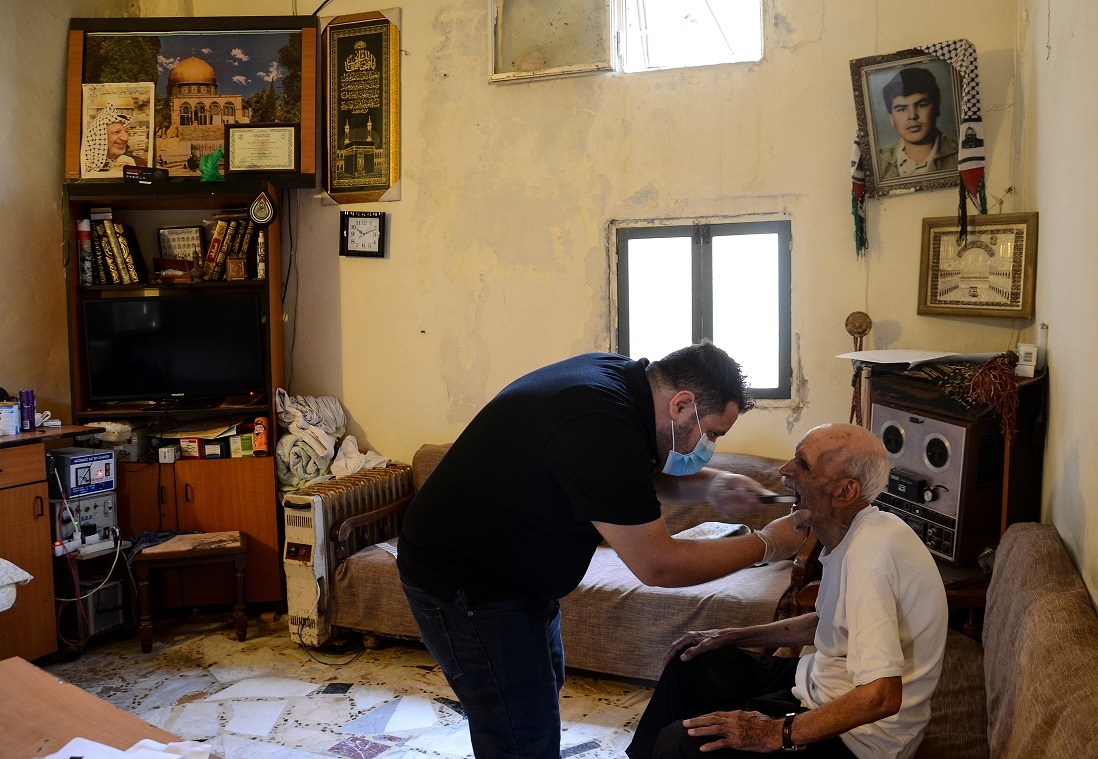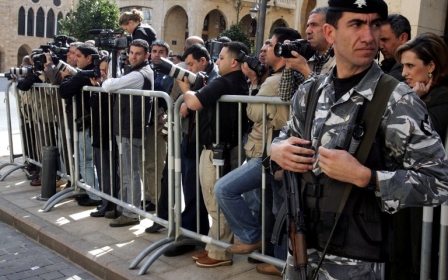Lebanese still searching for truth on disappeared of civil war

BEIRUT - Hamza welcomes the Red Cross team in his living room. He smiles and looks at them trying to make their way through the small room, passing his three children to reach washed-out sofas. The Red Cross came to take DNA samples. Hamza’s brother Abbass went missing during the Lebanese Civil War.
Abbass never came back home from a trip he took from Beirut to South Lebanon in 1984, while the country was at war. “He was not really a religious person but he let himself talked into by the leader of a local militia,” says Hamza.
Hamza lives in Ghobeiry, on the outskirts of south Beirut. His flat is surrounded by flags of the Shia parties Amal and Hezbollah, which were fighting against Israel and Christian parties in south Lebanon during the civil war in the 1980s.
In this pernicious conflict, with fragile alliances, the Amal party fought also against Palestinians and Hezbollah in Ghobeiry.
Today, more than 25 years after the end of the war, militia ex-leaders became ministers or members of parliament, protected by a law of amnesty.
And instead of investigating the estimated 17,000 people who went missing during the war, in 1995 the Lebanese government passed a law that allowed family to declare their relatives dead. Many people claim the law was a clever way for the government to avoid taking responsibility.
But since then, Lebanese calls to find out what happened to their loved ones have grown stronger. Remains found in civil war mass graves have been left unidentifed. And this is where the Red Cross has stepped in.
Carina Svenfelt, who leads the disappeared programme at the International Red Cross Committee's Beirut office, says that because of the reticence of authorities. the organisation's role in Lebanon is "unconventional".
"In other countries, we have a supervising role, helping out independent commissions in charge of the investigations and the exhumations. But here, the bill about the setup of that sort of commission has remained in the pipeline since 2012,” she says.
“In 2012, we started to collect ‘pre-disappearance’ data among 2,350 families of missing persons, meaning we have been gathering every physical detail that could help identify those who went missing.
"We have no political support whatsoever. Our motive is not political but humanist: families of people who went missing are dying and have no idea what happened to their loved ones. We cannot wait any longer."
Hamza is one of those the Red Cross is trying to help. He patiently listens to the team about its process: Two copies of his DNA sample will be stored, one at the organisations Geneva headquarters, and the other with the Internal Security Forces in Beirut.
This sample, which will be coded to guarantee anonymity, will probably match one sample that will be taken out from one the civil war mass graves. It is a similar process to how British experts were able to identify in 2009 the body of Alec Collett, British journalist who was kidnapped in Beirut in 1985.
But something unexpected happened; Hamza does not offer his DNA: “I trust the Red Cross but I don’t trust the ISF. They have never done anything to help when it comes to that issue. I will not give them my DNA,” he says.
A week later, interviewed by MEE, Hamza explained why he refused to give out his sample: “When Abbass went missing we looked for him, from Syria to Israel.
"Eventually, we found out that he had been killed and that his body had been thrown in a well in the area of Beit Jezzine.
"But after the war, when the rebuilding started, it became impossible to find the exact location. We made our peace with the hope of finding his body and giving him a dignified grave. Wherever he is, may he rest in peace.”
Mass graves to building sites
Since no law protects the sites of mass graves, many have been destroyed or covered up.
The NGO Act for the Disappeared, created to support the associations of families who have been fighting for the past three decades to unearth the truth, has reported that 31 times, human remains have been discovered since the end of the war.
Between 125 and 145 corpses were found. Except on rare occasions where IDs were found on the bodies, their identities have never been established.
The existence of civil war mass graves was recognised in 2000 by a government commission that was in charge of investigating the disappeared.
The commission mentioned three in Beirut - one in Mar Mitr cemetery, another in the Martyrs cemetery in Horsh Beirut and the last one in the English cemetery in Tehouita. However, the government has never started any initiative to allow their exhumation nor the search for other civil war mass graves.
Justine Di Mayo, the co-founder for Act for the Disappeared, told MEE: “We have decided to collect information about civil war mass graves in order to locate them and protect them, with the help of anthropologists and coroners.
"If we wait for the investigation commission to be created, maybe it will be too late - the sites might be destroyed by new building work.”
A lobbying tool
Like the Red Cross, the NGO has decided to focus on efforts in the field instead of negotiating with local authorities.
“By investigating on those human remains, we discovered that there is neither legal framework nor follow-up investigations,". says Di Mayo. "We are trying to pass a law that would protect those sites and in the meantime, we are setting up guidelines on how to deal with those remains for those who discover them."
The NGO aims to emphasise the importance of the grave sites when it comes to the disappeared in Lebanon.
“Talking about those mass grave sites is like saying that those who went missing are actually dead. Which is a taboo we are trying to break. Even though their relatives are dead, these families of disappeared ones undergo a daily psychological torture, having no information on what happened to them.”
After visiting Hamza, the Red Cross team went to Jnah. The family of Youssef, a Palestinian who went missing while buying croissants in 1985 aged 25, is willing to give out their DNA.
“We still have hope to find out what really happened. Youssef has two kids who are now married and are carrying the burden of this uncertainty,” says his brother Hassan.
Facing him, his father, 85 years old, will die without knowing the truth about his son. "We asked everybody about him. Lebanese, Palestinian, Syrian, all of them liars!" says Hassan. "Most of time we ended paying large amount of money just to get a lead."
Very few people in Lebanon believe that the authorities will do anything about the disappeared. But instead of giving up, the new generation wants to act.
Ghassan, the son of Wadad Halawani who founded a group that supports families of the disappeared, is working on the digitisation of 30 years of documents it have collected. The aim is to allow the younger generation to get to know what really happened during the civil war, which so far has been only told by the ex-militia members.
Ghassan says it is time for action.
“The authorities are doing nothing, so we have to collect as much evidence as we can about those people who went missing for so many years, so that will force them into doing something, into taking their responsibilities’, he says. "In a way, DNA samples that are collected by the Red Cross are becoming a lobbying tool for us.”
New MEE newsletter: Jerusalem Dispatch
Sign up to get the latest insights and analysis on Israel-Palestine, alongside Turkey Unpacked and other MEE newsletters
Middle East Eye delivers independent and unrivalled coverage and analysis of the Middle East, North Africa and beyond. To learn more about republishing this content and the associated fees, please fill out this form. More about MEE can be found here.




